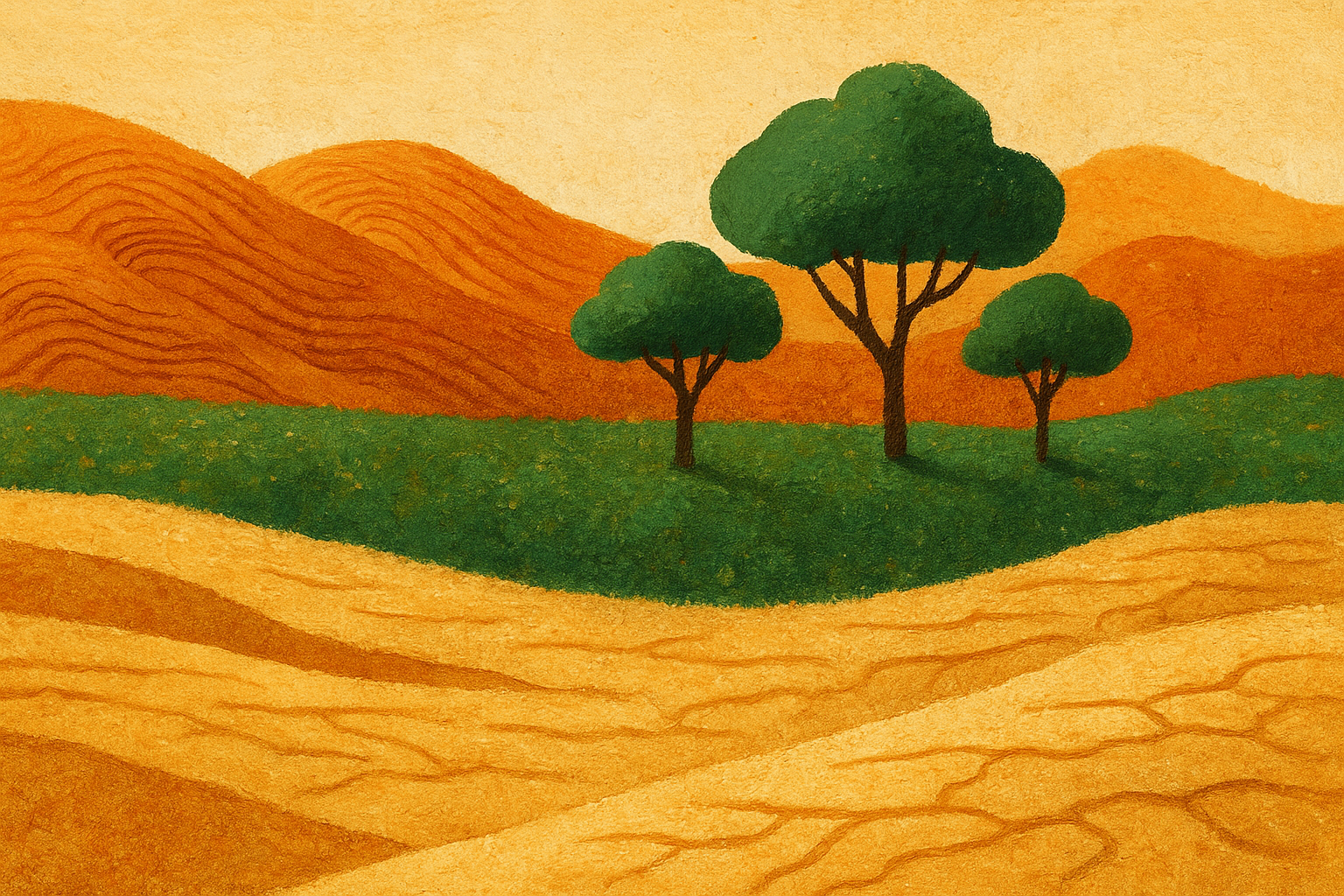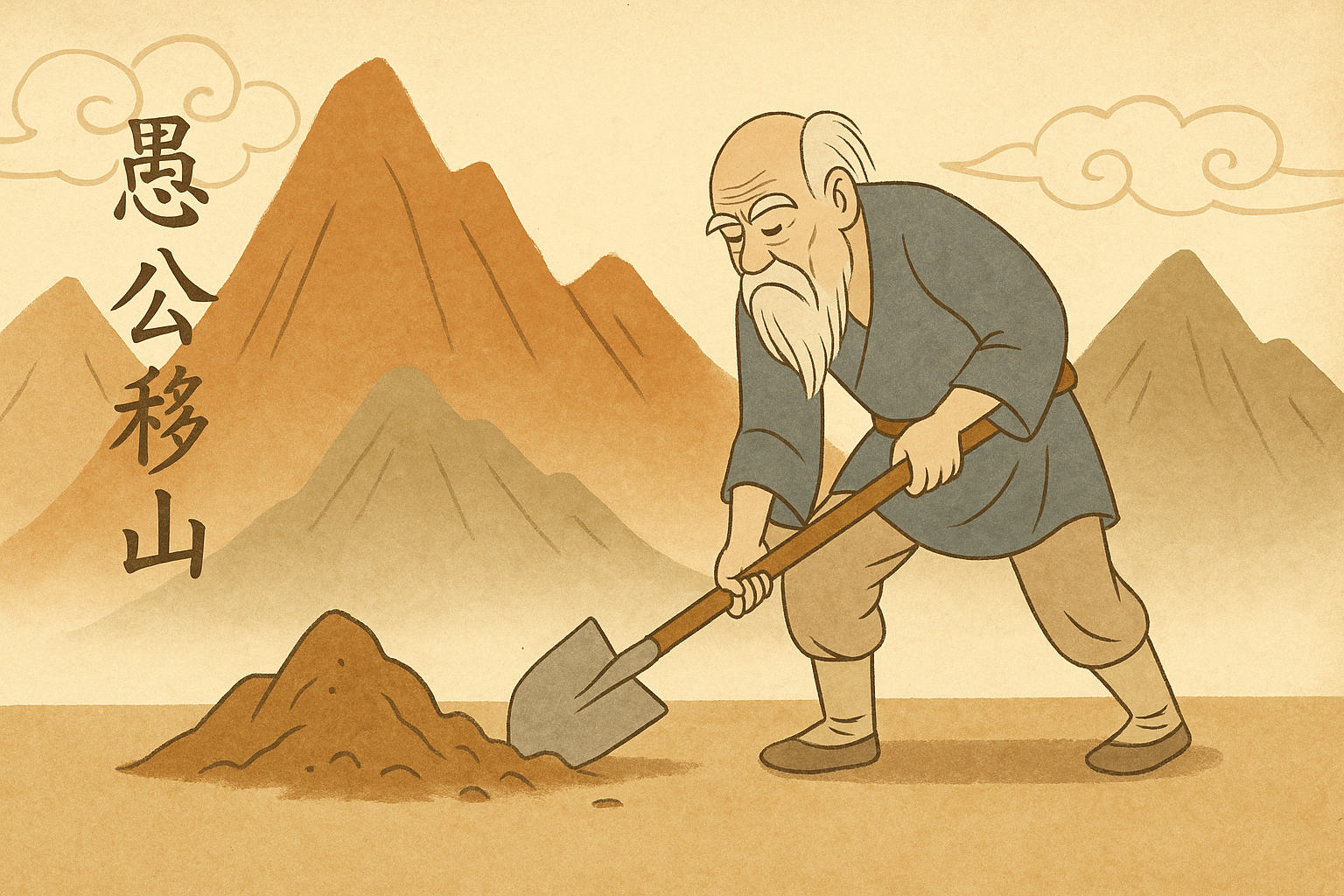
Facing the Desert
The fight against desertification in China has gone on for decades. In the north, the Gobi Desert edges steadily southward, turning once-fertile land into dust, pushing families out of their homes, and testing the resilience of cities. Nearly a third of the country's land has felt its effects. Overgrazing, deforestation, and poor water use have all played a part, weakening the land's natural defenses and leaving it vulnerable to erosion and drought.
Back in 1978, China launched the Three-North Shelter Forest Program. It's often called the "Green Wall of China"—a vast belt of trees stretching across the northern regions, designed to slow the desert's advance and give the land a chance to recover. The effort is massive and slow-moving, with work continuing until at least 2050. But this isn't just about planting trees. It's about learning to live with the land, not against it.
A Shifting Landscape
The Gobi Desert has long shaped life in northern China. But in the last century, the balance has tipped. More livestock, more farming, fewer trees, and less reliable rainfall have left the soil exposed. Groundwater levels are falling, and droughts are lasting longer. Without vegetation to hold it down, the earth turns to dust. Sandstorms follow, coating cities in grit and driving people away. It's an ecological crisis but also a social one.
The human cost is significant. Families in once-stable communities face difficult decisions about whether to stay or relocate. Schools and clinics struggle to operate during frequent sandstorms. Economic activity slows in affected regions. What began as an environmental issue now touches every part of daily life.
Building the Green Wall
The Three-North Shelter Forest Program spans across northern, northeastern, and northwestern China. The idea is simple: plant a barrier of trees, over 4,000 kilometers long, to block the desert winds. The methods, however, are far from simple. In places where sand dunes move like waves, straw is laid down in a checkerboard pattern to keep the ground still. Grasses and shrubs follow then hardy native trees. Aerial seeding covers ground quickly. Grazing is paused so plants can take root.

Communities and local governments also play a role. In some areas, schoolchildren help plant trees as part of public education programs. Farmers receive subsidies to protect young saplings or reduce grazing in designated zones. The effort is sprawling and varied, often adapting to fit local conditions.
Not everything has worked. In the early years, many trees didn't survive. Some areas planted too many of the same kind—poplars that grew fast but couldn't handle drought or pests. In other regions, new forests strained already scarce water supplies. And planting trees doesn't always make sense in drylands. Grasslands, some argue, would do a better job of holding the soil.
There have been social costs, too. Herders have been asked to move or change age-old grazing patterns. Some scientists question whether enough attention is being paid to how the land is managed—not just how many trees go in the ground. Programs intended to restore the land can unintentionally disrupt the people who have long depended on it.
Signs of Change
Still, the program has evolved. Since the early 2000s, it has shifted its focus to native species and mixed plantings. Sandstorms have declined, in some areas, by over 80 percent. Forest cover has more than doubled in key regions. In a few places, the desert is actually retreating.
These changes are not just statistical. In some towns, residents speak of clearer skies and fewer dust-filled mornings. Small springs that had dried up are beginning to flow again. Roads once choked with sand are now more passable. These small shifts add up over time, and they give reason to continue.
Some new approaches are also emerging. In parts of the desert, rows of solar panels now rise beside new trees. The panels shade the soil and generate power, while the vegetation helps anchor the land. In these dual-use landscapes, ecological recovery and economic benefit grow side by side.
A Mountain to Move
The Green Wall is often linked to the Chinese proverb 愚公移山, or "the foolish old man moves the mountain." It tells of an old man who, tired of mountains obstructing the path to his village, decided to dig them away using only simple tools. People laughed at him, saying he'd never live to see the result. But he replied that his descendants would continue the work. In time, the story goes, the gods were impressed by his persistence and helped move the mountains.

This proverb speaks to a mindset of long-term effort—where the work may not pay off immediately, but each small action contributes to lasting change. Like the old man's digging, the Green Wall depends on steady progress, generation after generation. It's not just about engineering a landscape but about holding onto the belief that something slow and difficult is still worth doing.
This spirit echoes in the Green Wall. The task may seem daunting—greening vast, arid landscapes over decades—but like the old man, the project moves forward with quiet resolve. Each tree planted and each straw grid laid is part of a slow process. The work is unglamorous and often invisible, but it carries a belief that with time and cooperation, even the most stubborn problems can be reshaped.
Lessons Beyond Borders
China's project has drawn international attention. Its techniques, like straw checkerboarding, are used elsewhere. And it has inspired similar efforts, like Africa's Great Green Wall across the Sahel. These projects share a message: that reversing land degradation is slow work but not impossible.
International partnerships have also grown. Chinese scientists have exchanged knowledge with counterparts in Mongolia, Pakistan, and Ethiopia. NGOs and global environmental organizations study the program's outcomes to apply lessons at home. The Green Wall is not only a national story but part of a larger global conversation about how to live with changing environments.
At the same time, China's experience shows that restoration is more than just planting trees. It means rethinking how land is used, how water is shared, and how people live in fragile environments. The desert may never fully retreat, but it can be met with care, patience, and steady hands.
A Quiet Image
Across parts of northern China, there are hills covered not in grass or forest but in squares of straw pinned into the sand. It's not a dramatic sight. But it speaks of something larger: a slow, deliberate attempt to restore what's been lost. Not just for now but for the future.
Each straw square, each sapling, and each new technique reflects a quiet persistence. The Green Wall doesn't offer easy solutions, but it offers a path—one built step by step over decades, with eyes on the horizon.




